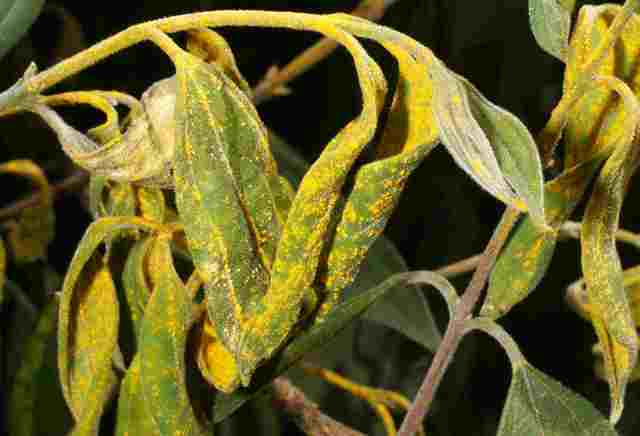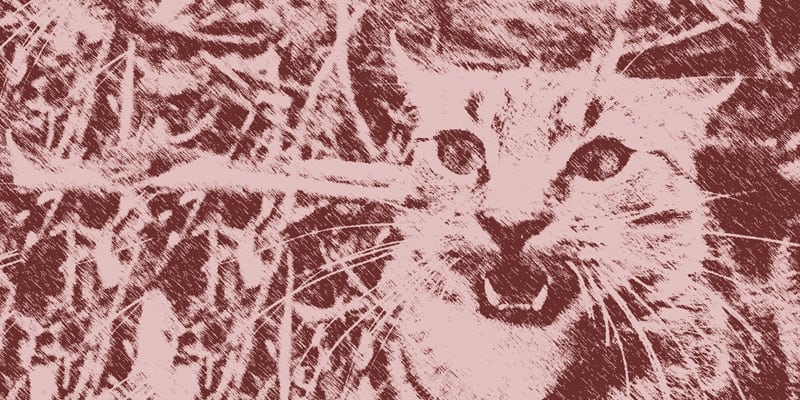The Australian Government intends to introduce new biosecurity laws to Parliament next month. Last week, the Invasive Species Council made a submission, endorsed by 18 other environment groups, on the draft laws. Here is a summary of our verdict on the draft Biosecurity Bill 2012.

Reform is essential
As replacement for the century-old Quarantine Act 1908, the Biosecurity Bill 2012 represents a rare opportunity to bolster Australia’s capacity to protect the environment from invasive species.
More than 70% of 1700 species listed as nationally threatened and more than 80% of listed ecological communities are imperilled by introduced animals, plants or diseases.
Australia’s most recent State of the Environment report gave the worst possible ratings for invasive species impacts on biodiversity: “very high” and “deteriorating”, and found that management outcomes and outputs are “ineffective”. The deteriorating trend is due to both new invaders, such as myrtle rust and Asian honeybees, and the spread of already established species.
ISC supports the ‘one biosecurity’ approach recommended by the 2008 Beale review that envisions a seamless cross-sectoral, cross-jurisdictional approach to biosecurity.
But protecting the natural environment differs in many ways from protecting industry assets and requires an ecological approach to biosecurity. Environmental biosecurity cannot just be a bolt-on to existing industry approaches. Biodiversity values at stake far outnumber industry assets, the scale and complexity of threats are far greater, knowledge is much sparser, predictability of impacts is much lower, and management options are more constrained.
A brief verdict
The Biosecurity Bill 2012 has powers and tools to provide for more robust environmental biosecurity but is limited by inadequate institutional arrangements and deficient decision-making and review processes.
There are environmental advances. The inclusion of the Biodiversity Convention in the Objects provides the direct legal basis for measures to “prevent the introduction of, control or eradicate those alien species which threaten ecosystems, habitats or species” (Article 8(h)). A national system for regulating the discharge of ballast water and sediment is a clear advance. Other powers and tools such as control orders and biosecurity zones can be applied for environmental benefit
The decision-making model is flawed. In opposition to recommendations by the 2008 Beale review, the Biosecurity Bill maintains biosecurity functions within the Department of Agriculture, Fisheries and Forestry (DAFF) rather than establishing an independent statutory authority. Instead of the recommended expert biosecurity commission and independent director, most decisions are to be made by the Director of Biosecurity, who is also the Secretary of DAFF and has potentially conflicting roles in trade and industry promotion.
Transparency is lacking. Most decisions under the Bill (including for imports of new species/taxa) will be opaque, with no requirement for community consultation, publication of assessments, third party appeal rights or merits review/auditing. Only import applicants will have the legal right for review. The Inspector-General of Biosecurity will not be able to audit decisions, only processes. Transparency is important to maximise community value-adding (expert information and innovative policy ideas, for example) and to limit the potential for inappropriate political or commercial influences.
There are too few guarantees. Whether biosecurity import risk analyses, control orders, or biosecurity zones will be applied for environmental priorities will be the decision of the DAFF Secretary. There are no systems to ensure they are applied systematically. Such measures have budgetary implications for DAFF, so are more likely to be used for issues of highest priority for DAFF (particularly in times of budgetary constraint) rather than issues of high priority for environmental biosecurity. There is no legislated involvement of the Environment Minister or Environment Department in environmental decision-making.
The community is under-rated. The Bill fails to give effect to a ‘biosecurity partnership’ with community, and ensure productive involvement in biosecurity policy setting and decision-making. This is likely to perpetuate existing disparities in investment and response capabilities for environmental biosecurity compared to agricultural biosecurity. There is need for a body equivalent to the industry bodies, Plant Health Australia and Animal Health Australia, to focus on priorities for environmental biosecurity.
Reform priorities
1. Structure: Implement the structure proposed by the Beale review of a statutory Biosecurity Authority, an expert Biosecurity Commission and an independent Director of Biosecurity. Specify that at least one-third of Biosecurity Commissioners must have primary expertise in disciplines relevant to environmental biosecurity, including ecology and conservation biology, and be appointed by the Environment Minister, as recommended by the Hawke review of the EPBC Act.
2. Precaution: Require application of the precautionary principle in decision-making under the Biosecurity Act.
3. Partnership: Implement a genuine partnership with community by providing rights for access to information, consultation, representation in policy processes and legal review at least equivalent to such rights under the EPBC Act. Require that all government committees with a focus on environmental issues include representation from the Environmental NGO sector.
4. Environment Health Australia: Establish an organisation equivalent to Plant Health Australia and Animal Health Australia – Environment Health Australia – to facilitate a cross-jurisdictional, cross-sector collaboration to develop more ecologically informed approaches to biosecurity, improve biosecurity preparedness, promote effective responses to environmental incursions, enhance community awareness, vigilance and action, and monitor and report on progress in environmental biosecurity.
5. Environmental role: Provide for the Secretary of the Environment Department and the Environment Minister to have roles in decision-making and policy direction on important environmental biosecurity issues, including issuance of biosecurity guidelines and priorities for BIRAs, review and auditing of environmentally relevant risk assessments, BIRAs and import decisions, declarations of biosecurity zones for conservation purposes (This applies if the biosecurity agency is situated within DAFF rather than as an independent authority.)
6. Biosecurity obligation: Require all biosecurity participants to exercise a general biosecurity obligation to take all reasonable and practical measures to prevent and minimise biosecurity risks, with provisions similar to those in Queensland’s Biosecurity Bill 2011.
7. Risk assessments: Ensure that decisions to permit new imports are transparently based on risk assessments and the best available evidence by providing for public input and review. If the Beale-recommended model of an independent authority and expert commission is rejected, establish a Risk Assessment Authority to undertake risk assessments and BIRAs.
8. Biodiversity: Define ‘environment’ to include biodiversity indigenous to Australia, including ecosystem, species and genetic diversity, and ecological processes.
9. Biosecurity risk: Define ‘biosecurity risk’ to (a) recognise changes through time, so that risks are assessed over an ecologically relevant time frame taking account of climate change; (b) include the likelihood of new genotypes of a disease or pest combining with others to exacerbate the potential for the disease or pest to cause harm or to cause greater harm than existing genotypes; and (c) recognise regional differences and different levels of biodiversity (ranging from ecosystem to genetic diversity).
10. National approach: Implement a ‘one biosecurity’ approach by adopting a national risk assessment protocol for pre-border and post-border application and establish a listing process for nationally significant invasive species to provide for risk-based management across the biosecurity continuum.
11. Conservation zones: Establish a category of biosecurity zone for high value conservation areas with high biosecurity risks known as ‘conservation biosecurity zones’, as the basis for implementing biosecurity measures, plans and monitoring. The zones should be declared by the Secretary of the Environment Department on advice by the Threatened Species Scientific Committee or other scientific committee, and biosecurity arrangements negotiated in bilateral agreements between governments and/or private property managers.
12. Islands: Extend the operation of the Biosecurity Act to Australia’s island territories. Facilitate biosecurity protection of high value islands by the systematic declaration of conservation biosecurity zones.
13. Biofouling: Adopt a national regulatory approach to biofouling, covering international and domestic traffic, for all Australian waters, as is provided for ballast water management.
More information
Submissions to help shape the final Bill can be made up to December 19, 2012. To find out how to make a submission visit the Invasive Species Council website.
Download ISC’s submission on the Biosecurity Bill.


